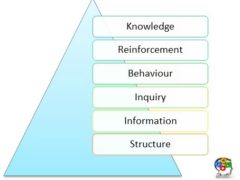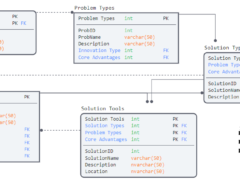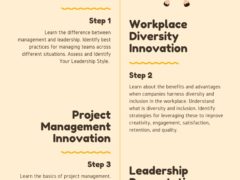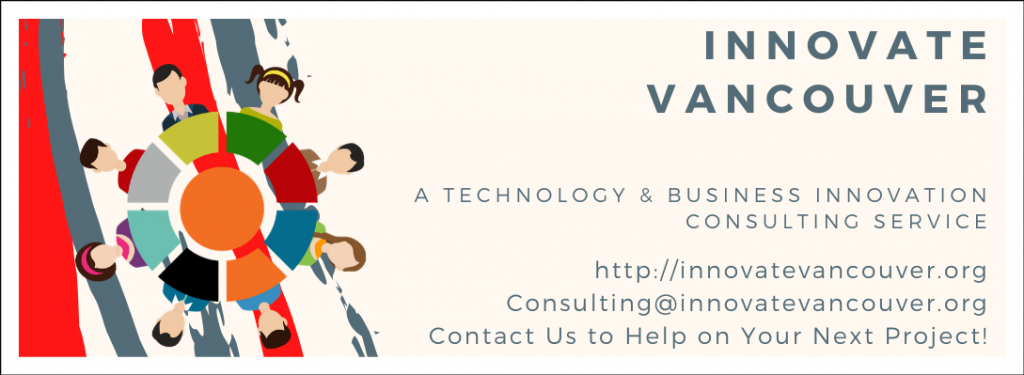Legacy systems represent business models. They depend on outdated technologies, products/services, networks, and/or value propositions. These are no longer competitive. In many instances, these legacy systems started out as competitive. However, they lacked the desire, agility, and momentum to stay at the top of their respective industries.

Legacy systems tend to avoid the risks perceived in change. They shy away from challenging existing assumptions and norms. They also fail to pivot to lead the next wave of innovation. The business culture becomes bogged down in outdated:
- Values,
- Assumptions, and the
- Processes that reinforce them.
Those who are able to succeed, despite the weight of legacy assets, are promoted. Meanwhile, those inclined to challenge the ‘status-quo’ are left without a voice or audience.
Examples of legacy models:
- Timesheets: Paper to electronic versions.
- Supervision: Ad Hoc to documented & tracked KPI’s (with technology advancements)
- Strategic Planning: Corporate Top-Down vs. Operations Bottom-Up
- Business Models: Brick n Mortar Stores vs. The Electronic Superhighway (internet, digital models, etc)
- ‘Culture fit’ will eventually become a legacy ‘model’ over time. It often focuses on homeostasis. It uses existing broken tools and processes instead of fostering innovation and change.
Is your business’ strategy planning process significantly influenced by legacy systems?
- Uncomfortable with change?
- Committed to technology that is outdated?
- Difficulty incorporating the suggestions of new recruits?
- Losing contracts because unable to effectively report on performance?
George Orwell’s book titled 1984 described the ‘Thought Police.’ They were always on the lookout for challenges to the prescribed system.
The term was popularized in the dystopian novel Nineteen Eighty-Four by George Orwell. It was first published in 1949. In the novel, thoughtcrime is the criminal act of holding unspoken beliefs or doubts. These beliefs or doubts oppose or question Ingsoc, the ruling party. – Wikipedia
Is your business’ strategy planning process significantly influenced by Thought Policing?
- Are differences of opinion openly discussed?
- Are different viewpoints openly included in strategy?
- Are certain beliefs held as universally valid despite having their limitations pointed out?
- Is dissent chastised, or otherwise punished, when voiced?
- Are efforts to support innovation or business improvement/excellence embraced or rebuked?

Legacy systems have a lot to lose when technology, strategies, or the business model is updated. The skills and competencies of the past are often inefficient when seeking to solve the problems of the present. These outdated skills and competencies are also at a disadvantage. The assets and tools used to produce results are updated. The outdated training and expectations of the past are often linked to outdated understandings of the customer. The product/ service models of the past are no longer relevant.
” ‘Orthodoxy means not thinking—not needing to think. Orthodoxy is unconsciousness.’ ” – George Orwells, 1984 (p. 53)

Challenges to the status-quo often result in an increase in personality-driven politics. When effective, efforts to defend the status quo often focus on:
- Resisting technology
- Resisting new training
- Resisting onboarding of new strategies, assumptions, or norms
- Resisting onboarding of change agents
- Resisting the introduction of new thought model
These efforts are even more effective when they are displayed by members of the leadership team. Where this is prevalent it is not uncommon for the business culture to almost exhibit a class-based legacy system that differentiates:
- Who has authority
- Who has access to information
- Who sets priorities
- Who determines how risk is assessed
- Who determines how performance is evaluated
Legacy systems are dependent on surrounding legacy ecosystems that include assets, technologies, values/ assumptions, processes, strategies, and sociopolitical norms. The interdependencies among the network nodes within the ecosystem reinforce the business’ resistance to change.
You had to live—did live, from habit that became instinct. You assumed that every sound you made was overheard. Except in darkness, every moment was scrutinized. – George Orwell’s 1984 (p.3)
The following tool can be used to evaluate the barriers and opportunities that exist in most legacy systems. The tool is broken down into three areas: Self-awareness, Other-awareness, and Bridging the gap. Try completing this tool with your leadership team and compare notes. If the team reaches an impasse about priorities, the exercise can help by including ranking and ordering. It can list pros and cons. It can also evaluate the business case of larger changes that require a substantial investment.
Scenario
You can use the following business case pulled from a social media site online (dated 2016) for completing the form below:
“It has been an interesting ride. Keep in mind that 80% of the work I have done has not been on actual projects. 2 workstreams (approx 5% of my workload) is transferring to a TO PM. The CFO believes at least half of my ‘projects’ should not have been assigned (GD, 2016).”
“In principle, most of the projects are delayed until Sept. The regional office has been ‘struggling with trying to find you work.’ There was no training in the first month. The regional office barely understands what the project management methodology is. They lack knowledge of the roles, tools, or requirements needed for 90% of the ‘projects’ assigned.”
“The class-based system mirrored by behaviour and conduct will be a challenge for any project’s execution. It’s clear some front-loaded change management is needed. Consulting, planning, and education/training are necessary before another PM is introduced.”
“Even then, the first step will still need to be absolute-validation. It confirms that a PM is actually needed. There also needs to be validation that there is enough legitimate work available. This ensures the role stays busy. This is what many consultants would refer to as a ‘bad client’: They do not know what their problem is. They do not know what the solution will look like. They do not know what the current state is. They do not know how to bridge the gap.”
What improvements would you recommend?
| Evaluation | Observations |
| Self Awareness | |
| Describe Your Current Business Model | Incomplete? |
| Describe Your Current Business Culture | Fractured? |
| Describe Current Challenges, How they are currently Attacked, and the Results | Low Coherence |
| Describe Your Current Leadership Philosophy & its Results | Fractured? |
| Describe Your Current Product/ Service Offerings, & How these have Changed Over Time | Outsourced? |
| Other Awareness | |
| Describe Your Competitor’s Business Model | Coherent |
| Describe Your Competitor’s Business Culture | Integrated |
| Describe Your Competitor’s Value Proposition | Customer Driven |
| Describe How Your Competitor is Perceived in Your Industry | responsive |
| Describe Your Competitor’s Product/ Service Offerings, and How their Business Model as Adapted to Changes to these Over Time | Relevant |
| Bridging the GAP | |
| What changes to the business model are needed to lead the next phase? | Systems Thinking |
| What changes are needed to the business culture to lead the next phase? | Engagement & Consistency |
| What changes are needed to the business value proposition to lead the next phase? | Revaluation |
| What changes are needed to the business current technology, strategies, processes, and HR assets to lead the next phase? | Updating |
| What changes are needed to the business product/ service offerings to lead the industry? | Updating |
Additional suggested strategies going forward:
1. Confirm there is enough work before installing a PM
2. Deliver PM general training to regional centre
3. Confirm there is sufficient PMBOK buyin before implementing best practices in regional centre
4. Confirm roles are understood and there is sufficient buyin before initiation of projects in regional centre
5. Confirm general meeting guidelines and codes of conduct receive buyin before initiating projects in regional centre
6. Standardize PM standards, templates, and guidelines while allowing for regional and project tailoring
7. Validate PMO leadership and coaching model. Ensure it is aligned with project and regional needs. Consider challenges and vision, including appreciative inquiry, coaching, and situational leadership.
8. Formalize and standardize the implementation of project evaluation & assignment protocols
9. Confirm project escalation evaluation and response protocols
10. Confirm project risk management protocols
11. Validate PMO portfolio management benchmarks, mandates, and implementation protocols
12. Standardize formal project scope & deliverables definition & management process for onset of project engagement
13. Validate project definition and criterion for PMO adoption.

The key to breaking down the constraints imposed by legacy systems begins with the leadership team. Perceiving opportunities beyond the existing ecosystem requires breaking down barriers.
Understanding the vulnerabilities inherent in the current legacy systems requires having the courage to disrupt current norms. One must introduce new tools and models for evaluating current performance. It also takes the integrity to see this self-discovery process through to the end. This is not for the faint of heart.
Personality-driven politics can derail even the best efforts to support innovation. Before you start on your company’s path towards self-discovery, you must understand the needs of your current customers. This understanding is crucial for business model innovation. The customer profile of the past may no longer be relevant. As a result, customers might go to your competitors to solve their problems.
Is your business’ strategy planning process significantly influenced by personality-driven politics?
- The squeaky wheel always gets the grease?
- Dissent is quickly squashed or poorly understood?
- Dissenting insights are poorly integrated, if at all, in strategy?
- The business culture reinforces homogeneity?
- Incumbents constantly poking holes in competing ideas?

If your company is truly dedicated to serving its customer, a commitment to business excellence is essential. Or even better, aim to lead its industry, and commitment to business excellence is essential. Completely removing emotional or personality-driven vectors in the planning process is probably ill-advised. A balance is necessary between business commitment and customer service. Deliver products or services that genuinely add value.
Understanding if your business is dependent on legacy systems requires an outward facing perspective. Unfortunately, as legacy systems become increasingly entrenched this becomes more difficult. In these instances an inward facing approach that evaluates the business culture for personality-driven politics becomes useful.
Travis Barker, MPA GCPM
Innovate Vancouver
Citation:
Orwell, G. (2017). 1984. New York: Houghton Mifflin Harcourt.




